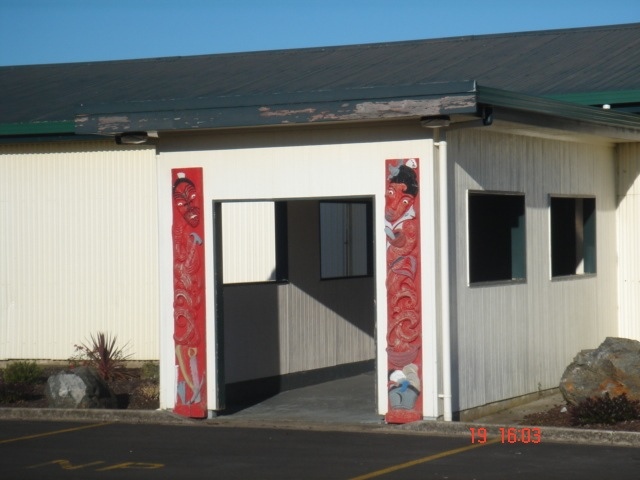A meeting held on the 12th of July 2013 and hosted by the Hamilton City Council. 18 submitters were personally invited to attend by the co-authors of the Hamilton City Council Proposed District Plan, Mark Roberts and Alice Morris (City Planners)
The following notes were written by Andrew Bydder (see http://www.linkedin.com/pub/andrew-bydder/16/908/772) who was in attendance as a submitter.
NOTES
The meeting was about the process (Resource Management Act) that needs to be followed
to establish the process (District Plan) for dealing with a resource consent
application. It is a long way from even attempting to find a solution.
I find that frustrating. I want to get on solve things!
But
it is obvious that there is no common ground. The proposed structure plan still
shows demolition of the heritage buildings, and a dramatic, incompatible change
to the special character of the community.
Don White showed no indication of shifting his position, and continues to say
the church has consulted and considered the views of all parties. As Liz Witehira
pointed out, a cease and desist letter is not consultation or consideration. I
see no possibility of progress by working with Don.
The submitters are deeply passionate and not going to give up, but have at least
shown more readiness for compromise in previous meetings. HCC is caught in the
middle.
So what happens now? I summarise my expectations:
HCC will not consider Temple View for growth or investment in the next 30 years.
Even after that, it is unlikely. Other growth cells are committed to, and no
funds are available. The Church trustees will not sell any land to another
developer. They do not want to lose any control over it.
Therefore,
the only new growth and infrastructure that could happen is via the trustees. The
trustees have no desire to do any development. Their original plan was to turn
the campus back into pasture.
The
trustees have deliberately not shown any new school or childcare facility in
their scheme plan.. Obviously such facilities could use the existing campus
buildings. Their exclusion is deliberate to remove the rationale to retain
campus buildings.
Yet such facilities are essential if the trustees were serious about new housing
development. Therefore I conclude the trustees are not committed to their
scheme plan.
The scheme plan is a smokescreen. The trustees are pretending to be offering a
vision. The vision provides an excuse for demolishing the campus buildings.
After that, there is no intention for the re-development to happen. This
achieves the trustees' original outcome.
As Ann McEwan pointed out, there is an absence of considered structure planning
within the proposed precincts. The trustees have a vague design guide to
suggest new work will mimic the campus style. But there will be no new work.
The trustees are just going through the motions.
Where
is the market research to support the scheme plan? Where are the demographic
studies to show the need? Where are the customer surveys to find out what
people want in each zone? Where is the financial analysis? Where are the
engineering reports on essential services? All they have to show is a google
map covered with coloured shapes like a school project.. For an experienced
property service, this is simply unprofessional – unless there
is no intention to build anything new.
There is a reasonable fit within the community for a retirement village catering
for elderly Mormons. But this can easily be accommodated on the available land
without demolition.
There is not the support base for retail, office, other uses – unless the residential
expansion occurs – which won't happen unless there are educational facilities.
The only purpose of the scheme plan is to justify demolition. Any demolition
will require resource consent under HCC's proposed District Plan. This needs to
be notified, and will be opposed by iwi, heritage, and community. HCC can
decline the consent (heritage is of national importance) or make the demolition
conditional on new infrastructure for the scheme plan being installed prior to
demolition – in effect stopping the process as the trustees have no intention
of doing that. The District Plan simply
needs to include an infrastructure provision for development in that zone.
So what then?
The current Temple View community is
special with a safe village atmosphere. But is it viable in the long term? Yes
– if it has community facilities. A stake centre will provide some, but not
all of what is needed. The campus buildings provide excellent community
facilities, but if these are demolished or left derelict, then the trustees
must commit to building new
ones or the community will not be viable.
The
trustees have a choice:
* Stubbornly do nothing and damage a uniquely Mormon community, leaving derelict
buildings as eyesores around the temple while the community declines;
* Stubbornly demolish heritage buildings only to spend tithed money on replacement
facilities (poor fiscal responsibility and no intention to do so);
* Do an embarrassing about-face and restore heritage buildings to support a vibrant
and expanding Mormon centre as a mission base for the South Pacific.
Frankly, what's so embarrassing about doing the right thing?
This
last option is the best outcome but I fully expect the first option to occur. The good news is that the buildings were so
well built by the missionaries that even with no maintenance, they will outlast
Don White. Perhaps a change of leadership will bring less pride and
stubborness.



























